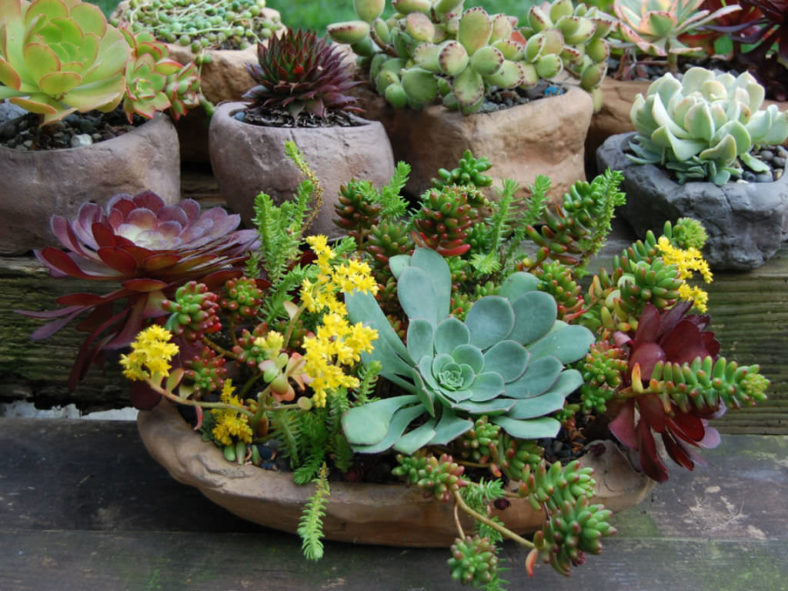Are you one who hangs his head in shame whenever we tout succulents as the easiest plants to grow? You are not alone. Trust me. Succulents are plants adapted to survive prolonged periods with very little water and play by their rule book. So here are some tips to help you keep your babies alive.
1. Give Them a Breathing Room
While a few succulents do well indoors, including Aloe and Kalanchoe, most of these plants hail from warm, arid climates and depend on good air circulation to breathe. So, while that succulent terrarium looks adorable, forget about it. You will have way more luck keeping your plants outdoors.
2. Provide Some Shade
Most succulents do not thrive despite widespread belief if blasted with the hottest temperatures and the fullest sun exposure. While they appreciate a lot of light, and very few survive in full shade, most succulents need sun protection, especially if the temperature is above 90 °F (32 °C) or if they are small. Varieties that are solid green, pale, or variegated are most in danger of sunburn. If you plan to blast your plants with the brightest sun possible, opt for plants that are red, gray, blue, or covered densely with spines, which help to reflect the sun's rays.

3. Start with the Right Soil
Use a well-draining soil mix. Or, if you are of the DIY persuasion, amend a traditional potting soil with coarse perlite, crushed lava, or pumice.
4. Low-water is not No-water
Perhaps you have killed your succulents by overwatering them, which is far more common than underwatering, which causes rot. But maybe you have already gotten the memo, are diligently dehydrating your plants, and wonder why they are dying. Well, newsflash, they need some water. Succulents like it when soil approaches dry before being watered. But what does this mean, you ask? It means you will likely be a-ok if, during dry times, you water small pots about once a week and large pots about every two weeks.
5. Include Drainage
Remember, succulent roots hate excess water. Be sure there is drainage in your container. We sometimes create pretty centerpieces in pots with no drainage. You have got to water these compositions, especially lightly. And you have to follow all of the other rules.
6. Succulents Need Food, Too
A once-yearly feeding is enough. Use any well-balanced organic fertilizer, cut the dose in half, and feed at the beginning of the plant's growing season for the best results.
7. Rethink Propagation
While you might be accustomed to plucking a stem of your favorite geranium, rosemary bush, or houseplant and dunking it in water to watch roots grow, that would not work for propagating succulents. You can practice the exact opposite method. When you have a plant you like, pluck a stem and let it dry out in the shade for at least three days. This process, known as healing, helps form a callus, preventing rot. Place your new stem in the soil mix mentioned above, and you should be ready.
8. Beware of Frost
While some succulents, including certain types of Sedum and Sempervivum, can withstand freezing temperatures, most cannot. When in doubt, assume that any drop below freezing will cause damage or death to your plant. The easiest solution for frost protection is to keep plants in containers light enough to move indoors or under awnings when a cold snap is predicted. Also, unlike the rest of your garden, succulents have a higher chance of survival if they are dry before a cold snap, not wet.
Source: sunset.com
Links
- Succupedia: Browse succulents by Scientific Name, Common Name, Genus, Family, USDA Hardiness Zone, Origin, or cacti by Genus